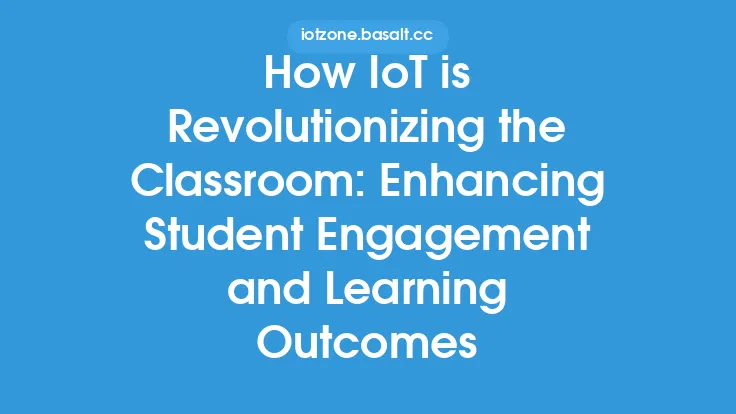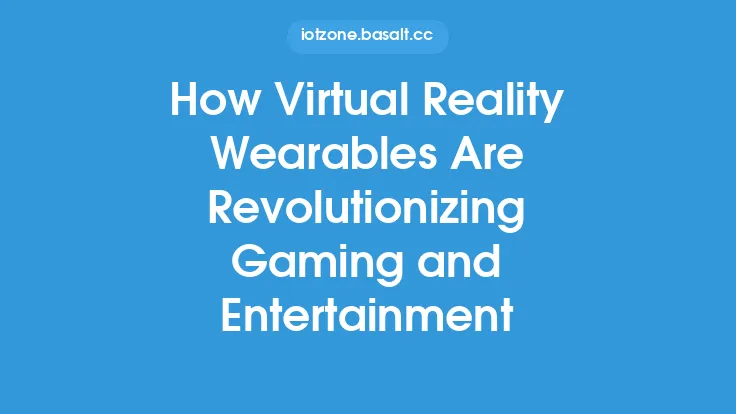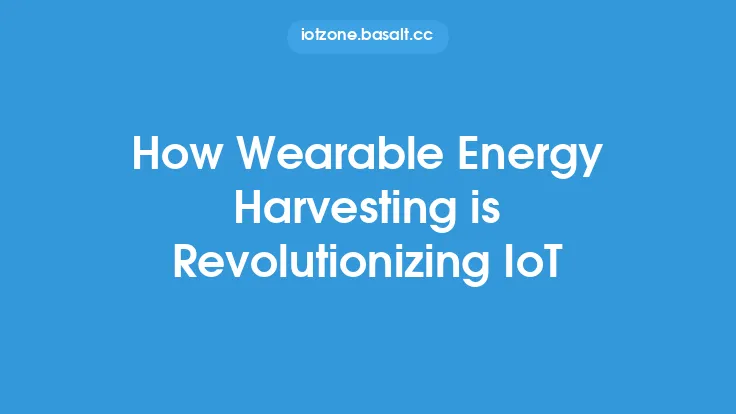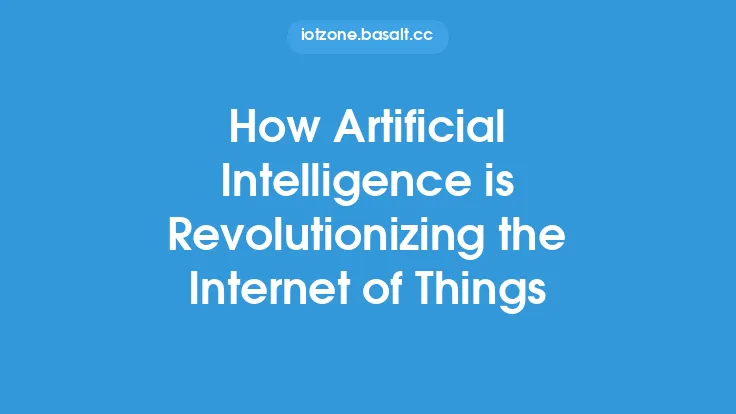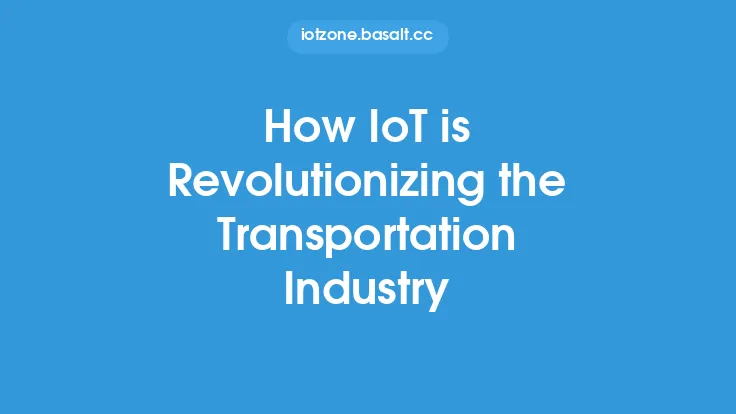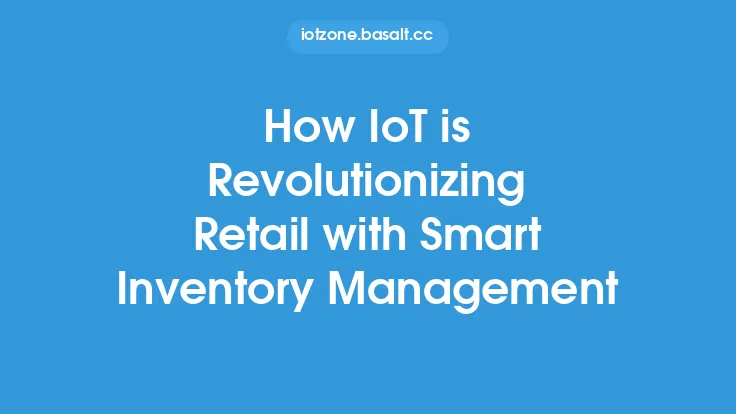The world is undergoing a significant transformation with the rapid growth of urban populations, and cities are facing unprecedented challenges in providing efficient services, managing resources, and ensuring a high quality of life for their citizens. The Internet of Things (IoT) has emerged as a key enabler of smart urban planning and development, offering a wide range of benefits that can help cities become more livable, sustainable, and resilient. By leveraging IoT technologies, cities can optimize their infrastructure, services, and operations, leading to improved citizen experiences, reduced costs, and enhanced economic competitiveness.
Introduction to IoT in Urban Planning
IoT in urban planning involves the use of sensors, actuators, and other devices to collect and analyze data from various urban systems, such as transportation, energy, water, and waste management. This data is then used to optimize urban operations, improve public services, and enhance the overall quality of life for citizens. IoT technologies, such as wireless sensor networks, IoT platforms, and data analytics, are being used to develop smart urban applications, including smart traffic management, smart energy grids, and smart waste management.
Benefits of IoT in Urban Planning
The benefits of IoT in urban planning are numerous and can be categorized into several key areas, including improved efficiency, enhanced sustainability, and increased citizen engagement. For instance, IoT-based smart traffic management systems can optimize traffic signal control, reducing congestion and decreasing travel times. Similarly, IoT-based smart energy grids can optimize energy distribution, reducing energy waste and promoting the use of renewable energy sources. Additionally, IoT-based smart waste management systems can optimize waste collection routes, reducing waste disposal costs and promoting recycling.
Key IoT Technologies for Urban Planning
Several key IoT technologies are being used in urban planning, including wireless sensor networks, IoT platforms, and data analytics. Wireless sensor networks involve the use of sensors to collect data from various urban systems, such as traffic, energy, and water. IoT platforms provide a centralized infrastructure for managing and analyzing IoT data, while data analytics involves the use of statistical and machine learning techniques to extract insights from IoT data. Other key IoT technologies for urban planning include IoT devices, such as smart meters and smart traffic sensors, and IoT protocols, such as LoRaWAN and Sigfox.
Applications of IoT in Urban Planning
IoT has a wide range of applications in urban planning, including smart traffic management, smart energy grids, and smart waste management. Smart traffic management involves the use of IoT sensors and data analytics to optimize traffic signal control, reducing congestion and decreasing travel times. Smart energy grids involve the use of IoT sensors and data analytics to optimize energy distribution, reducing energy waste and promoting the use of renewable energy sources. Smart waste management involves the use of IoT sensors and data analytics to optimize waste collection routes, reducing waste disposal costs and promoting recycling.
Challenges and Limitations of IoT in Urban Planning
Despite the many benefits of IoT in urban planning, there are several challenges and limitations that need to be addressed. These include data privacy and security concerns, interoperability issues, and the need for significant investments in IoT infrastructure. Data privacy and security concerns involve the risk of unauthorized access to IoT data, which can compromise citizen privacy and security. Interoperability issues involve the need for different IoT systems and devices to communicate with each other seamlessly, which can be a challenge due to the lack of standardization. The need for significant investments in IoT infrastructure involves the requirement for cities to invest in IoT devices, platforms, and data analytics capabilities, which can be a challenge due to budget constraints.
Best Practices for Implementing IoT in Urban Planning
To overcome the challenges and limitations of IoT in urban planning, cities need to adopt best practices for implementing IoT solutions. These include developing a clear IoT strategy, investing in IoT infrastructure, and ensuring data privacy and security. Developing a clear IoT strategy involves defining the city's IoT vision, goals, and objectives, as well as identifying the key IoT applications and use cases. Investing in IoT infrastructure involves investing in IoT devices, platforms, and data analytics capabilities, as well as ensuring that these investments are aligned with the city's IoT strategy. Ensuring data privacy and security involves implementing robust data protection measures, such as encryption and access controls, to prevent unauthorized access to IoT data.
Future of IoT in Urban Planning
The future of IoT in urban planning is promising, with many cities around the world already leveraging IoT technologies to optimize their operations and improve citizen experiences. As IoT technologies continue to evolve and mature, we can expect to see even more innovative applications of IoT in urban planning, such as the use of artificial intelligence and machine learning to optimize urban operations, and the integration of IoT with other emerging technologies, such as blockchain and augmented reality. Additionally, the increasing use of IoT in urban planning is expected to drive significant economic benefits, including job creation, industry growth, and increased economic competitiveness.
Conclusion
In conclusion, IoT is revolutionizing urban planning and development by providing a wide range of benefits, including improved efficiency, enhanced sustainability, and increased citizen engagement. By leveraging IoT technologies, cities can optimize their infrastructure, services, and operations, leading to improved citizen experiences, reduced costs, and enhanced economic competitiveness. However, there are several challenges and limitations that need to be addressed, including data privacy and security concerns, interoperability issues, and the need for significant investments in IoT infrastructure. By adopting best practices for implementing IoT solutions, cities can overcome these challenges and unlock the full potential of IoT in urban planning. As IoT technologies continue to evolve and mature, we can expect to see even more innovative applications of IoT in urban planning, driving significant economic benefits and improving the quality of life for citizens around the world.
